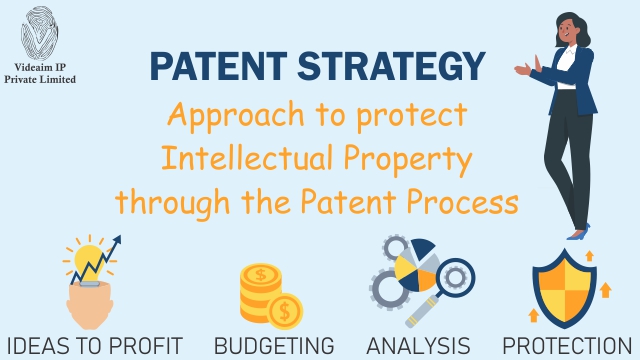
A patent strategy is a plan or approach that a business or individual develops to protect their intellectual property through the patent process. It involves decisions and actions to maximize the value of patents while minimizing costs and risks.
A well-defined patent strategy can help you safeguard your innovations, gain a competitive edge, and achieve your business objectives.
Key elements of a patent strategy:
Innovation Valuation: Valuation your innovations and determining which ones are worth patenting is important for an effective patent strategy. Not every idea or invention may be worth the time and expense of obtaining a patent.
Market Analysis: Analyze the market to understand the competitive landscape and potential opportunities. Identify areas where patents can provide a competitive advantage.
Competitive Analysis: Investigate what patents your competitors hold and how they may impact your business. This will help you to navigate around existing patents or design your inventions to avoid infringement.
Budgeting: Establish a budget for your patent strategy, including costs for patent applications, maintenance fees, legal services, and enforcement activities.
Patent Search: Conduct a thorough patent search to ensure that your invention is novel and not already patented. This step can save you time and resources. For more information on patent search , you can read our blog WHAT IS PRIOR ART SEARCH OR PATENT SEARCH?
Patent Filing Strategy: Decide where to file patents (e.g., domestically, internationally) and whether to file provisional or complete applications. For more information on patents , you can read our blog Understanding Patent in simple terms.
Types of Patents: Decide which types of patents are most suitable for your innovations. This can include utility patents and design patents.
Maintenance and Renewal: Keep track of maintenance fees and deadlines for renewing patents to ensure you protect your innovations throughout their full term.
Licensing and Monetization: Explore opportunities to license your patented technology to generate revenue or form strategic partnerships.
Infringement Monitoring: Continuously monitor the market and industry for potential patent infringements.
CONCLUSION
Don’t leave your patent success to chance. It is important to follow a Patent strategy that should be flexible and adaptable to changes and must align with your business goals and support your innovation and competitive objectives.
How Videaim IP can help you implementing effective Patent Strtaegy?
We at VideaimIP, have experienced patent attorneys to develop and execute an effective patent strategy tailored to your specific needs.
If you want to discuss more , Please feel free to contact us or Email your queries at info@videaimip.com and videaimip@gmail.com
